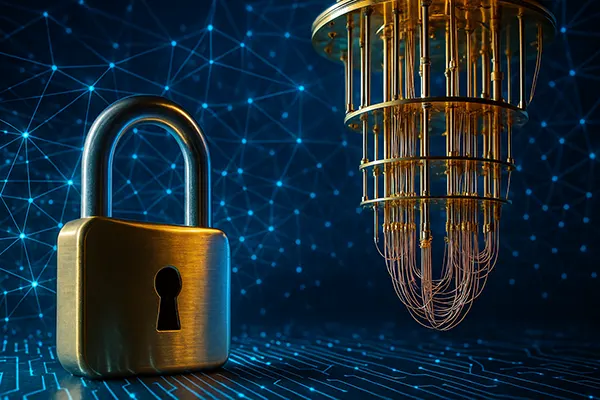
Quantum Resilience: Is the World Ready for Post-Quantum Cryptography?
As the digital world races toward quantum computing, concerns about traditional cryptographic methods grow sharper. Experts across governments, corporations, and academia are rethinking how to secure sensitive data in a future where today’s encryption could become obsolete. Post-quantum cryptography (PQC) has emerged as a critical area of focus, aiming to protect global digital infrastructure from quantum threats. But how close are we to real readiness? This article explores the state of global preparation for PQC and what remains to be done.
The Quantum Threat: Why Current Encryption Is at Risk
Quantum computers, once fully realised, will be capable of solving complex mathematical problems that underpin classical encryption algorithms like RSA and ECC. These problems, such as prime factorisation or discrete logarithms, would take classical computers thousands of years to solve—but quantum systems could crack them in days or even hours.
One of the major dangers lies in the concept of “store now, decrypt later.” Cybercriminals can intercept and store encrypted data today, waiting for quantum computing to reach the necessary maturity to decrypt it. This applies especially to long-term sensitive information, including government records, medical data, and intellectual property.
The US National Institute of Standards and Technology (NIST) has been spearheading efforts to identify quantum-resistant algorithms. In 2022, it announced four candidates for standardisation—CRYSTALS-Kyber, CRYSTALS-Dilithium, FALCON, and SPHINCS+—marking a pivotal step in the transition towards PQC.
Real-World Impact of the Quantum Threat
The sectors most vulnerable to the quantum threat include banking, healthcare, defence, and communications. A quantum-powered attack could disrupt secure transactions, compromise national security, or expose confidential information at an unprecedented scale.
Recent years have seen nation-states increasing investments in quantum computing, notably China and the United States. This geopolitical race is not just about computational supremacy but also about cryptographic dominance and surveillance potential.
Despite the distant reality of large-scale quantum computers, the transition to PQC must start now due to the slow nature of technology adoption, especially in critical infrastructure with long update cycles.
Global Efforts Toward Post-Quantum Preparedness
In 2024, several governments initiated strategies and policies aimed at post-quantum readiness. The US passed the Quantum Computing Cybersecurity Preparedness Act, which mandates federal agencies to prepare for PQC by inventorying cryptographic systems and planning migration.
Similarly, the European Union has incorporated PQC into its Cyber Resilience Act, encouraging member states to evaluate and adopt quantum-resistant standards. In the UK, the National Cyber Security Centre (NCSC) actively supports transitioning guidelines for public and private institutions.
Organisations like ETSI (European Telecommunications Standards Institute) and ISO are also working to standardise quantum-safe protocols globally. However, synchronising adoption across jurisdictions remains challenging due to differing legislative environments and technological capabilities.
Challenges in Coordinating a Global Response
One of the key issues in global PQC readiness is interoperability. Organisations across the globe must ensure that their quantum-safe implementations can communicate securely across borders and industries. This requires internationally recognised standards and coordinated implementation.
Moreover, the digital divide means not all countries or companies have equal access to resources needed for transitioning to PQC. While tech giants can rapidly invest in new systems, small and medium enterprises (SMEs) may lag, creating uneven vulnerabilities.
Trust is another factor. New algorithms must undergo rigorous scrutiny and peer review to build confidence among developers and security professionals. This process takes time and must not be rushed despite the urgency.

The Path Forward: Migration, Education, and Innovation
Preparation for a post-quantum future involves more than just adopting new algorithms. Organisations need to create cryptographic inventories, identify vulnerable assets, and develop transition roadmaps. This should be coupled with employee training on quantum risks and cryptographic hygiene.
In parallel, the private sector plays a pivotal role in testing and deploying quantum-safe protocols. Tech leaders like Google, IBM, and Microsoft are already integrating PQC into experimental projects and public-facing services. Their learnings will be critical for the broader industry.
Cryptographic agility—the ability to switch quickly between cryptographic algorithms—is increasingly being seen as a strategic requirement. Organisations that build this agility into their systems today will be better positioned to adapt to quantum-era threats tomorrow.
Long-Term Implications and Strategic Priorities
The timeline for large-scale quantum computers is uncertain—predictions range from a decade to several decades. However, in cybersecurity, delayed action translates into long-term risk exposure. The cost of inaction could be catastrophic if bad actors gain quantum capabilities before defences are in place.
Strategically, countries must invest in local cryptographic research and public-private partnerships to ensure sovereignty and resilience. Academic institutions also have a role to play by incorporating PQC into their curricula and fostering next-generation cryptographers.
Ultimately, the transition to PQC is a marathon, not a sprint. A globally coordinated, transparent, and inclusive approach will be the foundation of a secure digital future in the quantum age.





